Get to know your garden birds
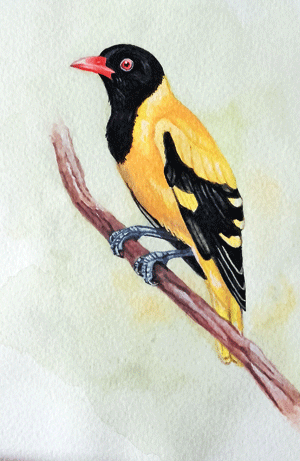
The Black-hooded Oriole
How often have we seen exotic and ordinary birds, big and small, flit from branch to branch, fly from tree to tree or swoop down with lightning speed to snatch up that hapless but tasty morsel in the form of an insect or a worm?
Glimpses of a flash of colour or a shrill cry or even a constant twitter as we sit by a window in our home or walk in our garden, leaving a question mark in our minds!
What bird is that should puzzle us no more, for the answer now lies in the colourful ‘Common Garden Birds of Sri Lanka’ by Dr. Pathmanath Samaraweera, fondly called ‘Sam’ by his birder-friends.
While there have been many books for the ‘serious’ bird-watcher, for the vast majority like us, the uninitiated, there has been nothing and that is the lacuna that Sam will soon fill.
It will also be a joint event – the launch of this handy booklet with common garden birds in all their finery to cater to people like you and me and also an exhibition of real-life paintings of birds.
These works have been in “hibernation”, smiles Sam, when we meet on Tuesday, amidst a busy schedule of getting his paintings mounted, while his books just off the presses stand tall on his dining table.
Earlier he just did not have the time to indulge in painting all day long, what with his work as an Oral and Maxillofacial Surgeon who headed the Department of Anatomy at the Faculty of Dental Sciences, University of Peradeniya and later with his practice in Colombo and his family with three young daughters.
An active member of the Ceylon Bird Club since 1986, his retirement from dental practice about two years ago paved the way for him to pursue his passion — studying birds and not only painting them but also photographing them. Often accompanied by his wife, Savi, who is also a Dental Surgeon, long would be the hours they spent trailing birds, trying to catch them in their natural surroundings, the latest being magnificent Mannar.
The birds must come alive in the paintings and this is what Sam strives to achieve. Jizz is his ardent wish – describing through his works of art the overall impression or appearance of his ‘subject’, the bird, all its features such as shape, posture, flying style or other habitual movements, size and colouration combined with voice, habitat and location.
The look of jizz helps us identify the birds, says Sam, explaining that how the word came about no one seems to know, but some believe that it is linked to a World War II Air Force acronym GISS for ‘General Impression of Size and Shape’ with particular reference to an aircraft. Of course, some of the other interpretations are that it is a corruption of the German word, gestalt, which means form or shape or even gist or just a shortening of ‘just is’.
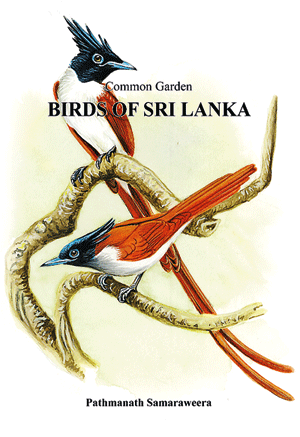 For him it is just the general demeanour of the bird – how it holds its head and how it behaves and he is a strong believer that unless one captures that in one’s painting, that work is a failure.
For him it is just the general demeanour of the bird – how it holds its head and how it behaves and he is a strong believer that unless one captures that in one’s painting, that work is a failure.
He turns the spotlight on the Asian Koel, his own work and says the painting is “good for recognition but not for perfection”.
The need for a book on common garden birds he felt as a teenager just into birds, relying heavily on the few books he accessed in the treasure trove of the Trinity College library, where he was studying. He would borrow these books and paint the images found in them, while the school holidays would open up wider vistas when he visited his maternal home in Dondra or other relatives’ homes in Anuradhapura.
“There are very few books on common garden birds for beginner bird watchers or schoolchildren, since W.W.A. Phillips’ four-book series, the first of which was on Garden Birds,” says Sam, adding that he thought of publishing this book with this group of readers in mind.
He would go to the field not only armed with a notebook and pencil to make quick sketches as well as jot down the colours but also with a camera dangling from his neck to snap photographs and then return home to more detailed work, sometimes even looking up G.M. Henry’s book.
Dabbling with water-colours first, which Sam says is not very thick, he later ventured into ‘thicker’ gouache which gave the paintings a much better appearance. Ten years ago he began experimenting with acrylic, on a series of endemic birds, which is to see fruition.
As the interview comes to an end with the question whether he paints to his heart’s content, he smiles and says now there are equally important labours of love vying with the lure of bird-call.
Granddaughter Ruvee in Sri Lanka and grandson Ranik in Australia have got a very tight hold of his heart-strings, keeping him from the wilds. To them Sam has dedicated ‘Common Garden Birds of Sri Lanka’.
The booklet is a fount of information, with the introduction giving tips to would-be bird-watchers, from what to wear, how to alert a companion when a bird is spotted, learning bird-calls to buying binoculars, along with a detailed sketch of the external parts of a bird….and the names of birds in all three languages for absolute clarity.
It describes 30 species which you may very well observe in a ‘typical house garden’. So keep it handy not only when peering at birds but also to flick the pages at leisure.
For me, the favourite is on the very last page – glossy black, their feathers seeming to shimmer in the light, the lines intricate and almost within reach of the fingers. It is the mundane, very common or much-maligned house crow, which we tend to shoo away, in all its splendour. In the book it looks good, in the painting it is magnificent.
Source – 06/08/2017, The Sundat times, See more at – http://www.sundaytimes.lk/170806/plus/get-to-know-your-garden-birds-252989.html

Use of polythene still continues
As debate continues over a Government plan to ban certain polythene items from September 1, the overuse of polythene continues to cause immense harm to the environment.
Given that it is easy to use, strong and water resistant, polythene is a favored consumer item. From large coverings used to carry dozens of items, to the humble ‘sili sili bag,’ polythene has become part and parcel of our daily lives.
However, many people continue to discard polythene items haphazardly after use, resulting in such items, which aren’t biodegradable, from accumulating.
They end up clogging drains, resulting in flooded streets and also become breeding grounds for mosquitoes. With cases of dengue at an all time high, there is no dispute that discarded polythene plays a part in spreading the epidemic. Due to the ongoing garbage crisis, people are also putting all their rubbish in a single polythene bag and are leaving them on roadsides.
A permanent solution still seems a long way off.
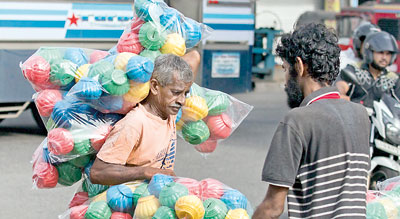
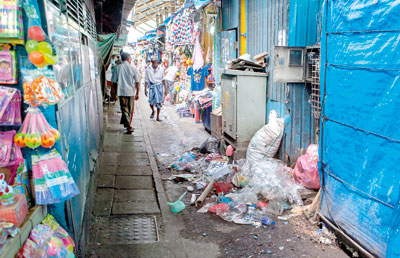
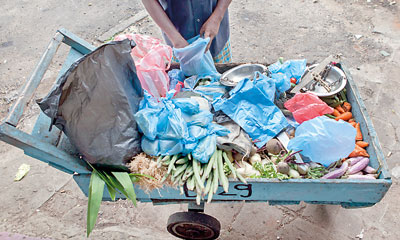
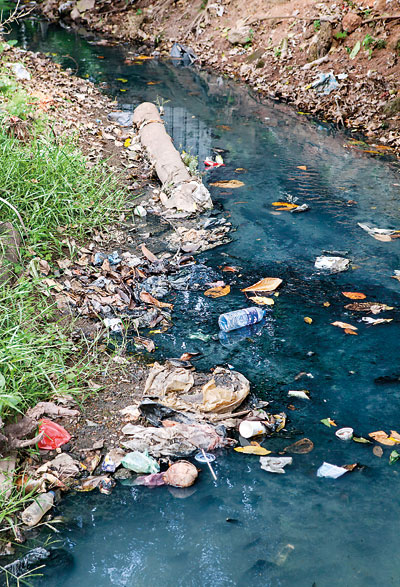
Source – 06/08/2017, The Sunday times, See more at – http://www.sundaytimes.lk/170806/news/use-of-polythene-still-continues-253291.html

Nuwara Eliya Municipal Council employs new garbage system
At a time when effective ways of managing garbage are being explored increasingly, the Nuwara Eliya Municipal Council (NEMC) has managed to put in place a comprehensive garbage management system. Only last month, a plastic and polythene recycling centre at the municipality’s sanitary landfill site at Sandathenna(Moon Plains) also commenced operations.
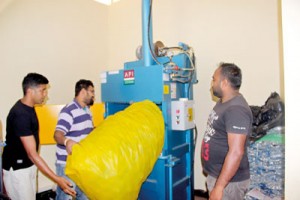
Plastic bottles being compressed at the centre
Spread over two hectares, the Moon Plains sanitary landfill was established in 2004 at a cost of Rs.17 million as a project funded by the Japan International Cooperation Agency (JICA). In July 2015, authorities also established a plastic and polythene recycling centre at the site.
The centre however, did not have electricity. It finally commenced operating on July 12, this year.
JICA conducted an assessment on the project which revealed that in a land area covering some 12.43 square kilometres in Nuwara Eliya, 25 out of 32 tonnes of garbage from 5,791 households, 3,520 businesses and 803 Government units are brought to the Moon Plains sanitary landfill. About 12 tonnes go towards making carbonic fertiliser.
Towards the end of 2015, the Nuwara Eliya Municipality also replaced its garbage carts with trucks and lorries.
In addition, the NEMC pasted 350 notices throughout the town informing residents about garbage management and the times that their garbage will be collected.
Within a span of about one and a half years, Nuwara Eliya residents have learned to hand over their garbage to tractors and lorries put in place to replace garbage carts.
D.B. Mavussawa, Chief Public Health Inspector (PHI) of the NEMC told the Sunday Times that 90 percent of people in Nuwara Eliya town were now segregating their garbage.
About two percent still don’t do so and this was a major problem, he maintained. “They continue to hand over unsegregated garbage to our lorries and we have to sort the garbage at the landfill site. As we have now started recycling plastic and polythene, we need to ensure that the item is clean when putting it in the recycling machine. This becomes a difficult exercise if garbage is unsegregated.”
He said the municipality’s garbage lorries and trucks have stopped accepting unsegregated garbage and have started collecting general waste, plastic and polythene separately.
Nuwara Eliya Municipal Commissioner Ruwan Ratnayake said while the Municipality’s garbage management program has earned widespread recognition, it was still far from perfect. Some Government institutions are still expressing reluctance to segregate their garbage, he alleged. “However, we are firm in our stance not to accept unsegregated garbage. When the entire country is adopting one approach, it is our duty to fall in line,” he pointed out.

Plastic bottles being collected at the centre

The plastic and polythene recycling centre
Source – 06/08/2017, The Sunday Times, See more at – http://www.sundaytimes.lk/170806/news/nuwara-eliya-municipal-council-employs-new-garbage-system-253317.html

Govt scours, scrambles for potable water for the drought-affected
With the remaining water sources continuing to dry up, the task of finding safe drinking water for over a million people affected by the prolonged drought, is becoming more challenging by the day.
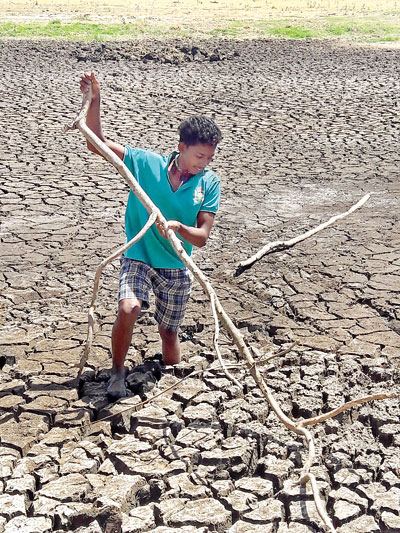
Thousands face severe economic hardships due to the devastation of their agricultural crops and livelihoods by the drought.Pic by Karuwala Gaswewa Jayaratne
In the worst affected areas such as Kurunegala, Puttalam and Trincomalee, authorities are scrambling to transport and distribute drinking water to tens of thousands, who are also facing severe economic hardships due to the devastation of their agricultural crops and livelihoods by the drought.
According to the Disaster Management Center’s (DMC) drought situation report issued at 9 am yesterday (5), over 1.1 million persons from more than 341,000 families in 137 Divisional Secretariat Divisions, are affected by the drought. Fifteen Districts are severely affected, while two others are moderately affected, said DMC Assistant Director Pradeep Kodippili.
Kurunegala District is the worst affected, with 151, 262 persons affected by the drought, while the Trincomalee District had 140,938 affected persons. Putta lam, Jaffna and Mullaitivu had over 100,000 persons affected by the drought.
Mr Kodippili noted that providing drinking water to the affected was the biggest challenge faced by authorities, with Rs 40 million already allocated for this purpose. Over 200 new bowsers and 6,000 water storage tanks had been sent to affected areas within the past few months.
District DMC offices were coordinating with District and Divisional Secretariats, Pradeshiya Sabhas and Grama Niladhari Divisions in distributing drinking water and conducting other drought relief efforts in affected areas.
The Govt is initiating drought relief measures in two ways, Minister of Disaster Management, Anura Priyadarshana Yapa told the Sunday Times. One aspect is the distribution of safe drinking water to affected areas, while the other is providing relief to families whose crops have been destroyed or damaged by the drought.
Bowsers and tractor-mounted bowsers have been dispatched to affected areas to distribute drinking water, the Minister pointed out. “We are also distributing water storage tanks, but have found the numbers are not sufficient,” he acknowledged. Accordingly, measures have been taken to purchase more water tanks for the drought-hit areas.
Additionally, the Sri Lanka Navy is also involved in setting up sea water purification plants in places such as Jaffna.
Meanwhile, efforts are also under way to provide relief to those affected by the drop in agricultural produce. Accordingly, the Govt will be distributing relief packs with Rs 5,000 worth of essential food items to each family in the affected districts every month for the duration of the drought.
According to Minister Yapa, initial estimates put the amount of funds required for the distribution of relief packs alone at Rs 2.5 billion per month. “It’s a huge economic burden,” he observed, “But, there’s nothing much we can do about that. People need relief.”
“The parcels will be distributed through Co-operatives and Sathosa outlets after District Secretariats send details of the affected in their respective Districts,” he further said.
The Sunday Times also spoke to officials in several Districts severely affected by the drought, regarding the situation in their areas. In the Puttalam District, 15 of its 16 Divisional Secretariat Divisions are affected by drought and the main difficulty now faced by authorities is finding water sources in the district to fill bowsers to supply affected areas, said Assistant District Secretary W.M.C.K. Wanninayake. “Most water sources have dried up and the ones that remain are not enough. We are currently faced with the prospect of not being able to find enough drinking water to distribute,” he stressed.
“Therefore, in addition to distributing water via bowsers, officials had requested funds to construct temporary wells near tanks,” he added. “Funds have also been requested to clean disused tube wells.”
“Compensation for damage caused to crops was also being paid at Rs 10,000 per affected family in the first round. The Rs 5,000 relief packs would also be distributed in the coming days,” said Mr Wanninayake.
“If the drought continues, there are fears the region’s coconut production too would be severely damaged,” he added.
The Trincomalee District faces a similar problem, as all water sources in the Gomarankadawala Divisional Secretariat Division have run dry. “The only way we can get drinking water to Gomarankadawala now is by transporting it all the way from Trincomalee in bowsers,” revealed DMC’s Trincomalee Assistant Director K. Sugunathas.
Mr Sugunathas said that, “However, all necessary equipment and funds have been made available for officials to provide relief, with a large bowser capable of transporting 13,000 litres of water was delivered this week.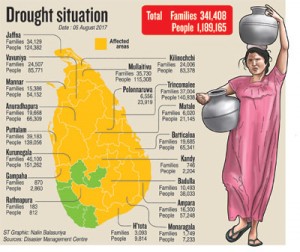
In Kurunegala, 30 bowsers have been dispatched to distribute drinking water,” said Additional District Secretary R.M.R. Rathnayake. The drought has had a severe impact on paddy cultivation, with only about 25% to 30% of paddy lands cultivated during this season.
Matale District Secretary D.P.G. Kumarasiri meanwhile, has instructed his Grama Niladharis to furnish daily reports to their respective Divisional Secretariats regarding details of families sans access to drinking water or, forced to purchase drinking water from shops or, travelling long distances to obtain water. Such data enables authorities to identify areas urgently in need of water, so they can provide it free of charge,” he explained.
According to Mr Kumarasiri, Galewela, Dambulla and Wilgamuwa areas in the district were the worst affected, with 70 Grama Niladhari Divisions directly impacted by drought.
Minister Anura Priyadarshana Yapa stated the Govt expected such drought relief measures to be in place for a short term as the Dept of Meteorology has forecast the current drought to prevail till the end of September or beginning of October. “The coming monsoon is forecast to be a normal one, with many rice producing areas severely hit by the present drought, getting sufficient water,” the Minister remarked. He however, added there was always the chance this would not happen, in which case the current relief measures will have to continue.
The Minister outlined the need for implementing short, mid and long term measures to mitigate effects of drought. “The reason is that, we have seen our monsoons are now periodically failing. The main culprit is climate change, the effects of which are being increasingly felt,” he opined.
“While the Govt would take whatever steps possible, the public also had a duty to conserve water. Whether you have your own water resource or, if you purchase water from the Govt, you need to understand that water is now a scarce commodity. Wastage must stop,” the Minister insisted.
Source – 06/08/2017, The Sunday Times, See more at – http://www.sundaytimes.lk/170806/news/govt-scours-scrambles-for-potable-water-for-the-drought-affected-253345.html
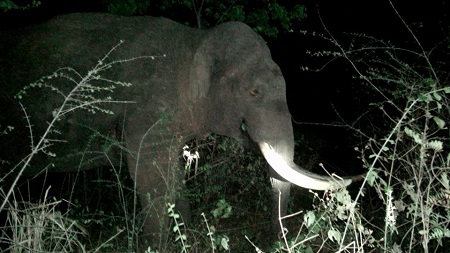
Famed tusker dies of wounds
A famed tusker in the Udawalawe known as ‘Hambegamuwe Ethaa’ has died after prolonged illness despite the best efforts of veterinarian to save its life.
The tusker was found while in severe distress on Thursday on the bund of the Rathambala Wewa in the park’s border with Hambegamuwa. The park’s eterinarians immediately began treatment on the elephant, but it passed away last evening (4).
Veterinary physicians who treated the tusker said the animal had five bullet wounds in its body as well as several deep cuts. The cuts had become severely infected and were life threatening, they added.
The tusker was about 40 years of age at the time of death.
According to the census on the country;s elephant population conducted in 2011, there were only about 120 tuskers left in the wild.
Story and Pics by Rahul Samantha Hettiarachchi in Hambantota
Source – 08.08/2017, Times Online, See more at – http://www.sundaytimes.lk/article/1028959/famed-tusker-dies-of-wounds





